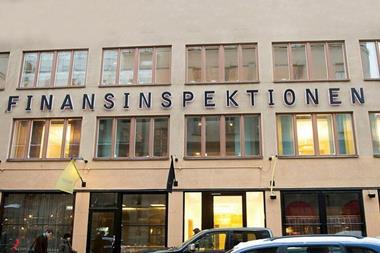Hong Kong Institutional investment has gradually increased during the past three years. This stems from the fact that general property prices dropped by more than 60% from their peak in 1997, where valuations started to get attractive in the low interest rate environment. Many of the major players are US companies, such as AIG, Citibank and Morgan Stanley, followed by investors from Australia and the UK.
Institutional investors tend to favour acquiring existing properties rather than getting involved with property development. This being said, they tend to favour high quality or B class properties with substantial potential for repositioning or upgrading. One unique feature of the Hong Kong market is that purchase and lease-back transactions have not been popular. This is due to most prime buildings being predominately held by the big local developers as long-term investments and most occupiers tend to lease rather than purchase their office premises.
A local real estate investment trust (REIT) market has been slow to develop because local interest has been weaker than in Japan, South Korea and Singapore. The slow establishment of the REITs market in Hong Kong could be attributed to the limited availability of trophy properties for sale, and the financial strength of the group of local developers that controls much of the prime property market, which is in no hurry to offload prime properties from their extensive portfolios.
Singapore Historically, there has been substantial interest in prime Singaporean investment property on the part of overseas institutional investors. Although Singapore continues to impose some restrictions on foreign investment in the residential market, there are no restrictions on foreign ownership of non-residential properties.
In July 2002, Singapore’s first REIT, CapitaMall Trust (CMT) was successfully listed on the local exchange. The Ascendas Real Estate Investment Trust (A-REIT), an industrial REIT, was floated on the exchange in November 2002. In the second half of 2003, A-REIT took an active role in property acquisitions, substantially broadening its base of rental income through the purchase of six industrial buildings, acquiring all of them on the basis of sale and lease-back arrangements. While no overseas institutional investor has listed a REIT on the Singapore stock exchange to date, in 2003 Cheung Kong Holdings of Hong Kong listed its Fortune REIT, into which it injected five of its wholly owned suburban shopping malls in Hong Kong.
Overseas institutions became more active in the investment market after 2000. Most of the European and US institutional funds aim at properties that are able to produce steady cash flows over a specified time frame. Therefore the structure of existing leases is an important consideration in any acquisition. The investment market is basically open to foreign participation and there are no preferences for government-linked companies. There is minimal government interference and the market is generally transparent and well-regulated. However, one factor which has tended to dampen deal flow in Singapore recently has been a gap between the price at which owners of major commercial properties are willing to dispose of their assets and institutional investors’ initial yield requirements in making acquisitions.
South Korea The history of foreign investment in South Korea can be roughly divided into two stages. The first was from 1998–2000, when the real estate market was initially liberalised for foreigners. Lone Star, Goldman Sachs, Morgan Stanley and Lehman Brothers were among the active players in this period, mainly pursuing non-performing assets and businesses at ‘distressed’ prices. From 2002, the diminishing number of investment targets combined with the surge in popularity of REITs led to a shift in the investor profile from vulture funds to mid-tier investors focused more on yield and stable cash flow, which notably include Macquarie Bank, GRA and GIC.
Office properties are the most sought after asset type. Foreign investors are mainly attracted by the high yields, cash stability (due to long lease terms), low vacancy and limited new supply of office property in Seoul. By contrast, there have been relatively few foreign-invested residential investments. This is attributable to a combination of excess demand for housing as well as low investment required for residential development.
Since 2000, foreign investment funds have widely opted to establish special purpose companies and issue five-year asset-backed securities (ABSs) to finance their property acquisitions for exemption on acquisition and corporate tax. The government plans to clamp down on this method of tax avoidance. Foreign investors are increasingly switching to using CR-REITs as a vehicle to acquire properties from troubled financial institutions. Eight CR-REITs have been launched to date including two established by overseas funds, Macquarie Central Office CR-REIT and GE Capital’s K-1 CR-REIT, the latter funded by private placement and not listed on the stock exchange.
Japan The Japanese property investment market is one of the most mature in Asia. Overseas institutional investors can participate in many segments of the property investment and development market and avail themselves of an equally wide variety of investment approaches to seize hold of the range of opportunities the market presents. In a reasonably well regulated property market, overseas investors are entitled to the same benefits and incentives and subject to the same degree of control as domestic investors. However, the Japanese market presents a high degree of complexity to new overseas institutional entrants because of the persistence of its main defect: low transparency.
Despite this complexity and less than ideal transparency, overseas investors are still fascinated by the Japanese property market, and the Tokyo market in particular, thanks to its potentially attractive rate of return. Acquisition of existing properties in Tokyo is one of the areas in which a very broad spectrum of overseas institutional investors are drawn to participate due to this market sector’s high degree of liquidity and the chances it presents for making opportunistic investments.
The essence of this approach is for overseas institutions to approach Japanese companies which are under financial pressure or otherwise need to divest themselves of properties under their ownership, but before they are re-possessed by banks as the collateral pledged against non-performing loans. Some of the most interesting transactions in this ‘opportunistic’ direct acquisition of existing property are conducted discreetly, off market.
The J-REITs market has made great strides since the first two REITs were launched in September 2001. As of year-end 2003, there were nine REITs listed on the Tokyo Stock Exchange, representing a total capitalisation of $7bn. As a result of their rapid multiplication on the market, the investment market in Tokyo has come to be dominated by REITs, a phenomenon that is linked to the strong performance of most REIT issues traded on the Tokyo Stock Exchange in 2003. At the same time, the Japanese regulatory regime for the formation is sufficiently liberal to permit some institutional investors to establish their own unlisted REITs in Japan, such companies including UBS, GMAC and CB Richard Ellis Investors.
Andrew Ness is executive director, global research and consulting
Asia, at CB Richard Ellis in Hong Kong












No comments yet